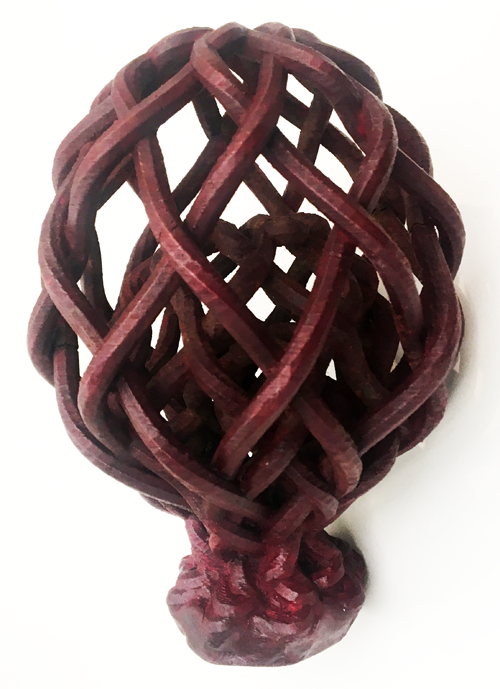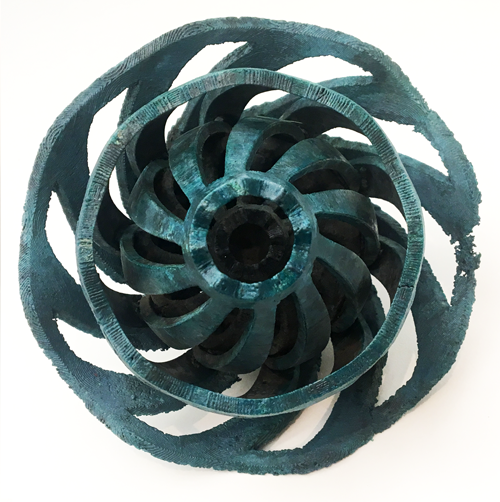Complex 3D Prints
into Metal
Jennifer Weiler
This work explored the creation of cast bronze objects from complex 3D printed models. In the design and manifestation of these pieces, I focused on models that would be difficult to impossible to create without the use of 3D printing technology, and used centrifugal casting in order to successfully create the finished objects. The final sculptures contained both visible physical qualities of the 3D printing process and metal casting, and hint at the type of work that can be made through collaboration of digital fabrication and traditional crafting techniques.
In previous work casting 3D prints, I would begin by making rubber or silicone molds of the 3D print. Those molds were then used to make wax replicas, which were then shelled, burned out, and cast in metal. However, this process restricts the types of designs that can be created (the 3D printed models and wax duplicates need to be able to be removed from the silicone mold without damaging either of them).
Instead, for this work, I tried directly shelling the 3D models. Because of the relatively low melting temperature of 3D printed plastic, it is possible to melt the plastic out of the shelled mold. (However, because 3D printed plastic is different from wax, the foundry did repeat the process twice to insure that as much of the plastic as possible was melted out of the mold). Food safe PLA plastic was used in order to insure that the burn out was as safe as possible.
One downside to directly casting the 3D print is that it makes the process of making multiples much more difficult. In terms of time and cost, it is a lot more efficient to create several wax replicas from a mold rather than 3D printing several copies of the model. However, for complex models like the ones we created for this test, direct casting seems to be the only option.
Both are internally very complex (containing parts with parts),
making them impossible to make copies of through the use of rubber or silicone molds.
Both models were generated programmatically using Processing.


Casting the 3D printed designs presented unique problems. Both designs were composed of several long narrow passages, which meant it was less likely that the poured bronze would be able fill out all of the details (the result would be remaining air pockets that would cause parts of the finished sculpture to be missing). In order to prevent this as much as possible, centrifugal casting was used during the bronze pour.
Centrifugal casting is a metal casting approach in which the shelled mold is spun as the liquid metal is poured into it. The technique is most commonly used when making metal pipes, though it can also be used to insure that detail is captured in complex sculptures.
Center: the models after being shelled.
Right: After the metal pour, the sells are broken open to reveal the bronze casts.



Happily, the experiment with casting complex 3D prints was mostly a success. There were some small defects in the finished models, likely caused either by some 3D printed plastic still being left in the shell. Overall, the results are promising and show the design potential of combining 3D printing technology with traditional metal casting techniques.








